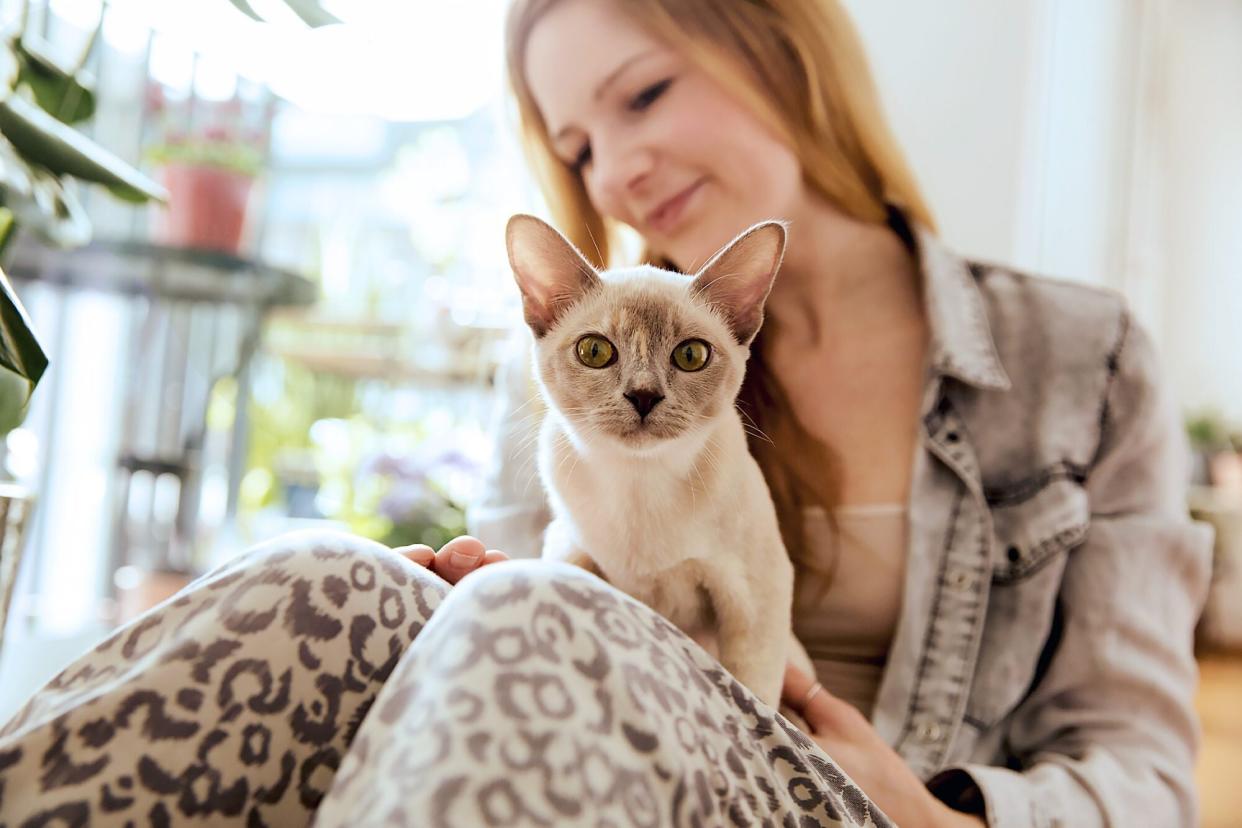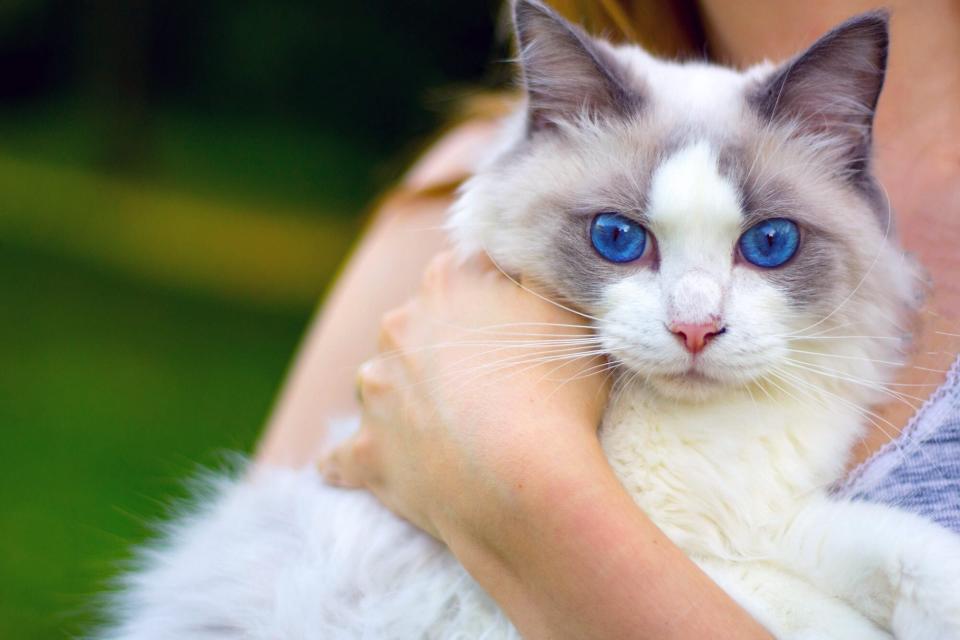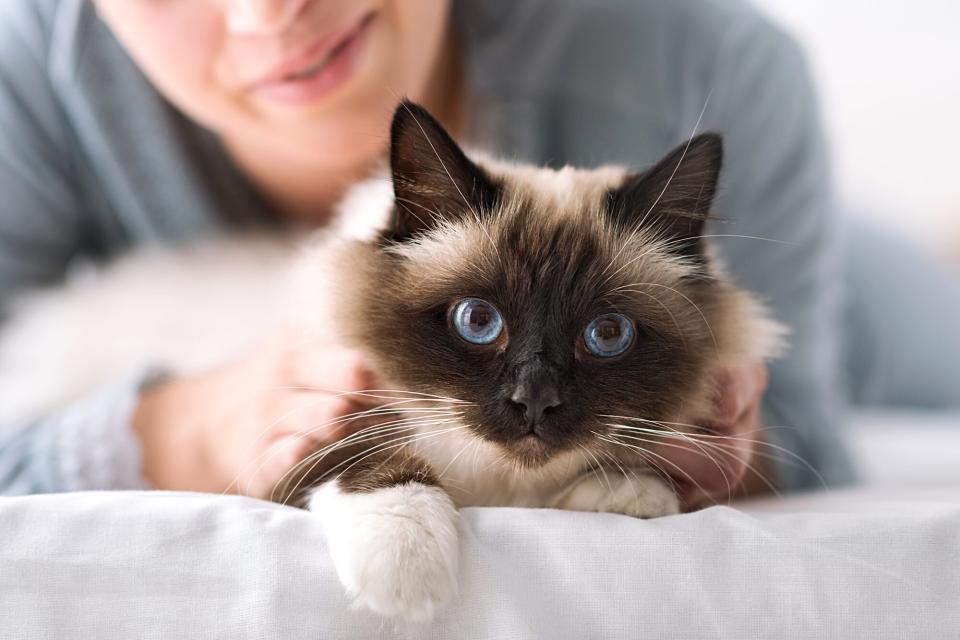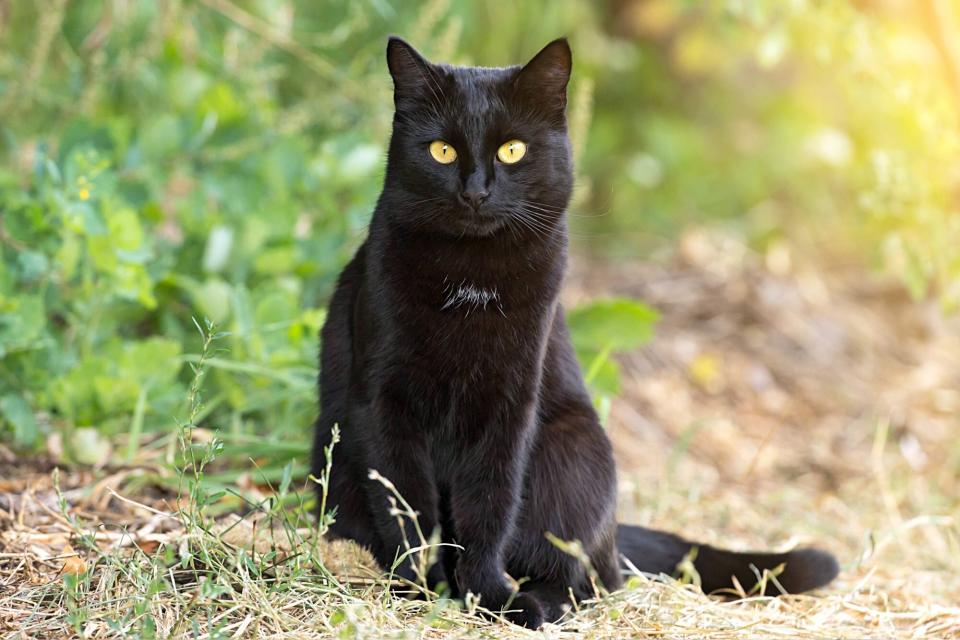9 Most Affectionate Cat Breeds Who Will Always Be By Your Side (and in Your Lap)

Westend61 / Getty
The cat's out of the bag: anyone who's loved a friendly feline knows they aren't nearly as "too cool for school" as their reputation portrays. Many animal lovers find man's best friend can't be rivaled in congeniality, but cats can be total cuddle bugs, too. The most affectionate cat breeds crave attention just like their canine counterparts.
What Causes a Cat to Be Affectionate?
While cats of the same breed have similar parentage and therefore share common physical and personality traits, every cat is different. Kittens begin developing behavior between 3 to 7 weeks old, building a foundation for the rest of their lives, says Molly DeVoss, CFTBS, CCBC, CRM, FFCP, a certified feline training and behavior specialist for her nonprofit Cat Behavior Solutions.
If a kitten isn't exposed to people early on, they likely won't grow up to be overly gregarious. Of course, if they have a negative experience being neglected or abused by a human, they may maintain a mistrust later in life and be hesitant even with the loving human hero they deserve.
Still, kitties doted on from day one aren't automatically going to be affectionate. A few other factors might determine their penchant for people as they advance through life.
Gender: "Research suggests that cats in general prefer female owners because they relate better to softer, higher-pitched voices," DeVoss says. "I have not observed a cat's gender to influence their level of affection or gender preference for owners." Of course that doesn't mean the proud cat dads out there will get the cold shoulder, but cats in the house may take more of a shine to female inhabitants. Male and female cats alike will seek affection in their own way.
Spayed/neutered or intact: Simply put, cats who are intact—not spayed or neutered—may seek, erm, affection elsewhere. The ball's in your court. While your cat may initially be a bit of a grouch about the whole thing, even those who have endured the cone of shame due to the pesky procedure will forgive you and desire your attention. At least someday, probably soon.
Pregnancy: Cats with babies on board can use their maternal instincts for good, or not so good, DeVoss says. They may become extra affectionate during pregnancy but can also be extra protective of their kittens and lash out. If a human baby is on the way, your cat likely knows something's up. "Cats are very sensitive and can often detect illness and medical conditions in people," DeVoss says. "It is thought this might be due to a change in the way a person smells, acts, or sounds. Cats are very in tune with routine and ritual and notice subtle changes in their environment."
Hunger: Speaking of routine, your cat's mealtime is likely accompanied by some courtesy meows to remind you your life basically revolves around them and their full food bowl. We aren't saying they are manipulative masterminds, but maybe take their head butts with a grain of salt at mealtime. "Cats are typically more affectionate when they are hungry," DeVoss says. "They are masters of cause and effect and learn very quickly how to get our attention."
Age: Surprisingly, cats don't necessarily get more affectionate with age. While seniors certainly may lounge around with you a lot more, those with arthritis or other aging pains could be more sensitive to touch and not appreciate pets as much as they once did.
With all of this in mind, some of the most affectionate cat breeds known for their people-pleasing personas are a good place to start if you're seeking an attention seeker of your own.
Ragdoll

Nataša Kogoj / Getty Ragdolls love being held so much, they get their name from their tendency to flop over in their owner's arms.
True to their name, the ragdoll is known for relaxing in your arms, going limp much like a ragdoll when picked up. It's no wonder these blue-eyed beauties boast the top spot on the Cat Fanciers' Association Most Popular Breeds list for both 2019 and 2020. Family-friendly and as cool, calm, and collected as they get, ragdoll cats are a ready addition to loving households everywhere.
Maine Coon

krblokhin / Getty
Those with lots of love to give need look no further than the muscular Maine coon, the largest domestic cat breed. "He adores attention but is not overly demanding, and though he will happily be loved by any member of the household, he does tend to choose one particular person on whom to bestow most affection," according to the Maine Coon Cat Club.
Challenge accepted!
Siamese

Laura Drake / EyeEm / Getty Siamese cats can be one of four color combinations, but will always have striking blue eyes.
The social Siamese has a dog-like demeanor, desiring to be the center of your attention at every opportunity. Owners requiring privacy (on the toilet for instance) might have to adjust to a constant shadow with the Siamese never straying too far. Vocal and vivacious, these scene stealers aren't afraid to ask for attention and tend to do well with other cat companions in the home to play with when their first choice—you—isn't around.
Scottish Fold

Megaloman1ac / Adobe Stock With their down-turned ears, some say Scottish folds look like a cross between an owl and a cat.
Large eyes and their trademark "folded" ears atop round noggins make the aptly named Scottish fold a near-dead ringer for an owl, though the friendly feline isn't so likely to spook when a human is around. In fact, Scottish folds flock to their family members, happy to lounge nearby until you notice them.
Birman

StockPhotoPro / Adobe Stock Birman coats can be a few different colors, but the cats' eyes are always a striking blue and their four paws are pure white.
Historically revered as the Sacred Cat of Burma, the Birman is thought to have begun in ancient temples; when a priest died, it's said his spirit passed to his Birman cat companion before moving on to his next life. However, today's Birman cats have lost much of that mystique as they tend to be laid-back lap cats—even to the littlest members of the family.
"Birmans tend to be good with children who love them, even if they are not often exposed to children," according to National Birman Fanciers. "In order to be truly happy, they need love and attention. They often enjoy their owner on the end of a cat toy!"
Persian

Anil Mathew / 500px / Getty
DeVoss lists the Persian as one of the least aggressive cats. As one of the most recognizable, stylish cat breeds, it's no wonder Fluffy prefers high praise rather than hissy fits. Flowing fur and flat faces are two trademarks of this fancy cat breed, and attention is practically a requirement with all of that fur. Make sure all the affection you have to offer includes a daily brush of those luscious locks.
Burmese

Westend61 / Getty
Golden-eyed and good-natured, the boisterous Burmese brings joy to anyone around to witness his antics. Another cat breed that just might sneak his way into a dog lover's heart, the Burmese cat enjoys interactive games with their humans, such as hide and seek, or Fido's favorite, fetch.
Sphynx

Wunderfool / Getty If you ever can't find your sphynx kitty, chances are she's found a sunny spot to lie in.
While their bald bodies don't immediately scream "cuddle me," that's never stopped the hairless sphynx from seeking a snuggle buddy to warm up with. Cozying up to these kitties is actually better for allergic owners since their lack of fur makes them a low-allergen breed. But don't let their nudity deceive you: their skin requires quite a bit of upkeep to stay healthy and hygienic. Weekly baths are a must!
RELATED: What You Should Know About Hairless Cat Breeds
Bombay

Виктор Иден / Adobe Stock As active cats, Bombays need plenty of toys and a cat tree (or two) to keep happy and healthy. They won't complain about going outside in a harness or catio, either!
Despite what superstition says about black cats, they can be affectionate, too, and the Bombay is a shining example. Quite literally, their sleek black fur catches the light just so, and it's almost as if a mini panther has inhabited your home. Don't worry, the Bombay is actually a Burmese and American shorthair mix bred to be black but not as wild as their big cat doppelgängers. In fact, they fit right into family life.
"Bombays are congenial, outgoing, and make intelligent, affectionate companions," according to the Cat Fanciers' Association. "They adapt well to busy lifestyles and usually get along with children, elders, and other pets."
